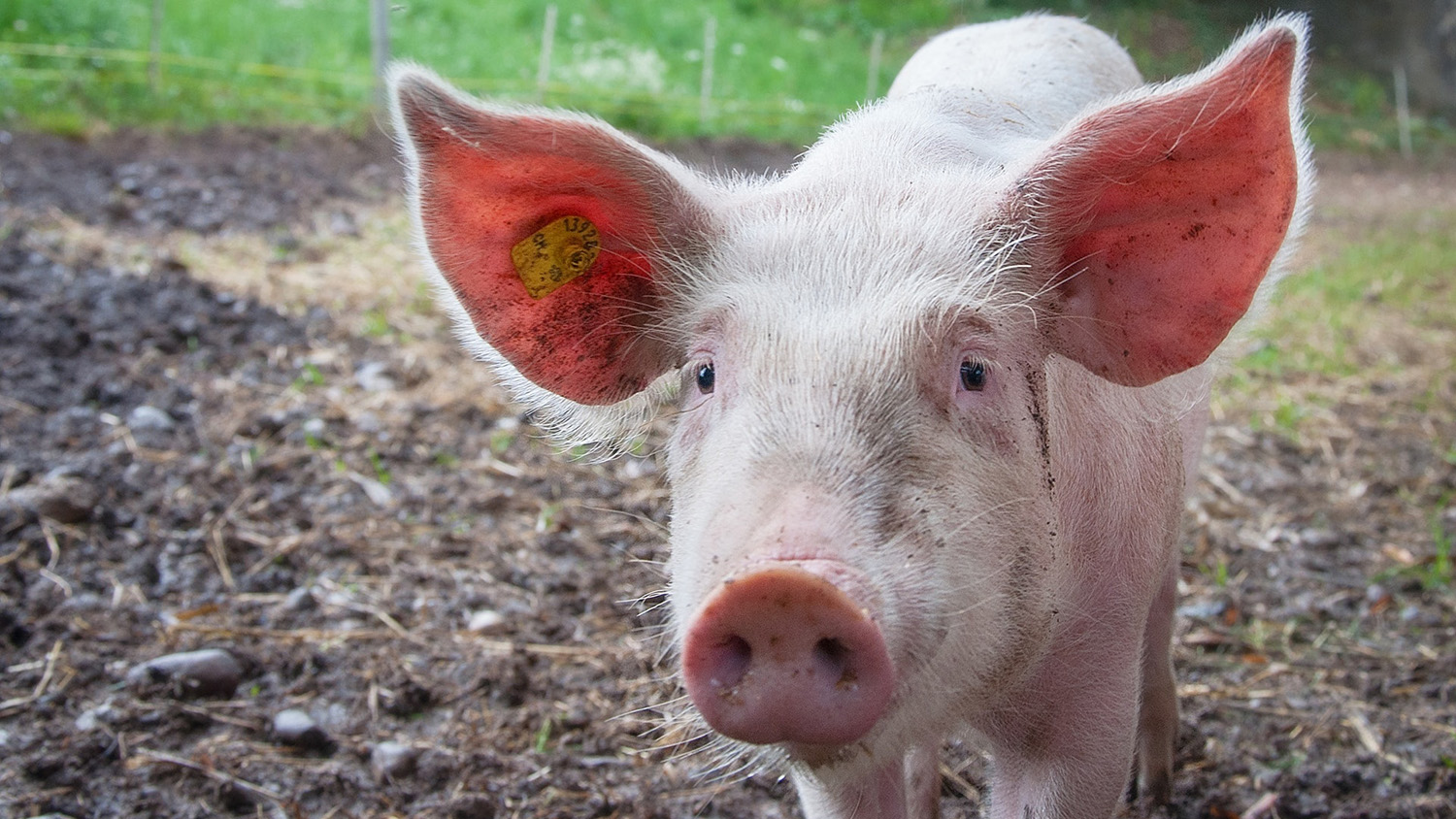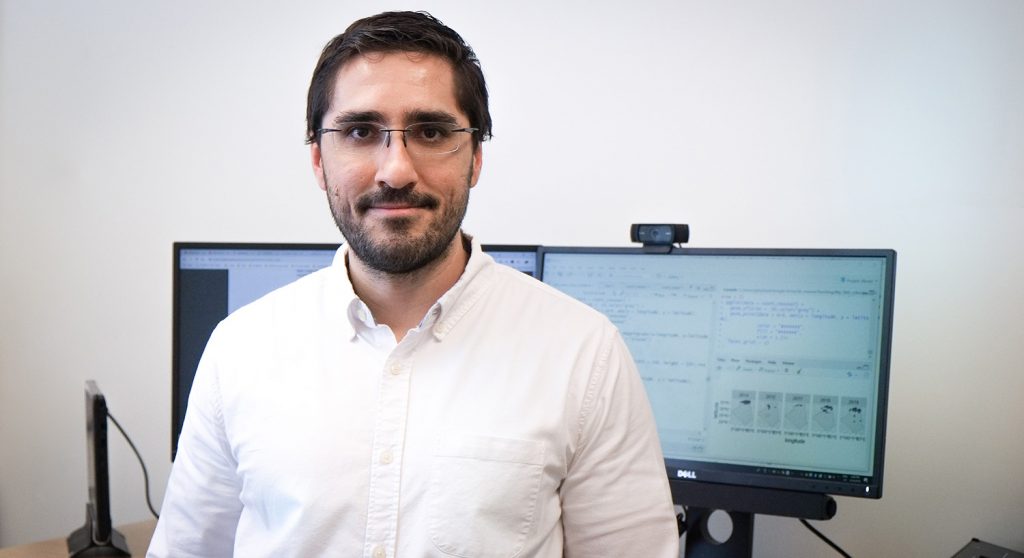Saving Our Bacon: A Scientist’s Work to Protect the Pork Industry From Virus Outbreaks

Editor’s Note: This is a guest post by Greer Arthur, a communicator in the Global Health program at NC State’s College of Veterinary Medicine.
In 2015, an outbreak of bird flu destroyed more than 50 million chickens and turkeys in the United States. Within a matter of months, affected states reeled from the overwhelming damage: in Iowa alone, economic losses were estimated at $1.2 billion, and thousands of jobs were lost.
Epidemiologist Gustavo Machado, an assistant professor in NC State’s College of Veterinary Medicine (CVM), specializes in preparing for livestock disease outbreaks like avian or swine flu. His new study is based in Rio Grande do Sul, Brazil’s southernmost state, where the threat of swine viruses looms over the local economy.
Machado’s goal is to track how swine viruses spread between pig farms, and to identify which farms are at the greatest risk of a new outbreak. Each year, according to Brazilian veterinary authorities, about 26 million pigs are traded within Rio Grande do Sul, contributing to Brazil’s ranking as fourth largest pork producer in the world.
“New swine viruses like the Seneca Valley virus are emerging more often than before, requiring surveillance systems to be more sensitive and identify potential threats quickly,” said Machado.

A native of Brazil, Machado studies transboundary animal diseases, which are highly contagious infectious diseases that sweep through countries and across national borders. His research focuses on diseases harmful or fatal to livestock, which can disrupt economies, food security and livelihoods.
Stopping the Spread of Disease
Many swine viruses threaten the pig production industry, but some, like foot-and-mouth disease, which causes very similar symptoms to the Seneca Valley virus, are the most economically damaging. The viruses cause lesions on the feet, snout and mouth of pigs, and reduce livestock productivity.
Although these viruses may travel by air or contaminated animal feed and farming equipment, as many as 60% of swine viral diseases are caused by transporting infected animals to an uninfected farm, said Machado.
To stop the spread of viruses between farms, Machado, his co-investigator Cristina Lanzas, CVM associate professor of infectious disease, and their collaborators in Brazil are mapping swine trade routes in Rio Grande do Sul. When a swine virus is detected, these maps hold the potential to help halt the trading of infected animals and contain future disease outbreaks. Researchers will also use the maps to test computer-generated scenarios of Seneca Valley virus outbreaks and different quarantine strategies.
“We need to establish accurate analytical methods and a workforce to prepare for virus outbreaks, so that when we identify an outbreak, we have a better idea about which trade routes need to be halted,” said Machado.
Training a Global Health Workforce
Machado and his CVM co-investigators will also host a five-day workshop to train 15 veterinarians from Brazil on the project’s analytical approach, which includes network analysis and mapping techniques.
To develop the workshop, Machado is working with Andrew Stringer, CVM clinical assistant professor and director of global health education. He is also working with Maria Correa, CVM professor of epidemiology, public health and policy, who has worked extensively in Latin America on disease risk assessment and communication.
Machado’s work is being supported by a research grant from CVM’s global health program – the first research grant the program has ever awarded.
“This is a great opportunity to combine global health research with specialized training to ensure a country has the independent capacity to protect their own people and economy,” said Sid Thakur, director of global health at CVM.
Global Work, Local Impacts
As the U.S.’ s second leading producer of pigs, North Carolina also stands to benefit from Machado’s study. The Seneca Valley virus is already circulating throughout the United States, and although many countries around the globe have invested heavily in eradicating foot-and-mouth disease, the disease has never been obliterated completely, and remains a persistent threat.
By studying swine viruses in Brazil, Machado said, researchers can gain important information on the same viruses in the United States, and how to approach future outbreaks.
“Our work in Rio Grande do Sul could help places like North Carolina, because we’re all threatened by the same diseases,” says Machado. “We can use similar techniques to create networks of swine trading in regions like North Carolina, and identify which areas are most at risk from future outbreaks.”
- Categories:


